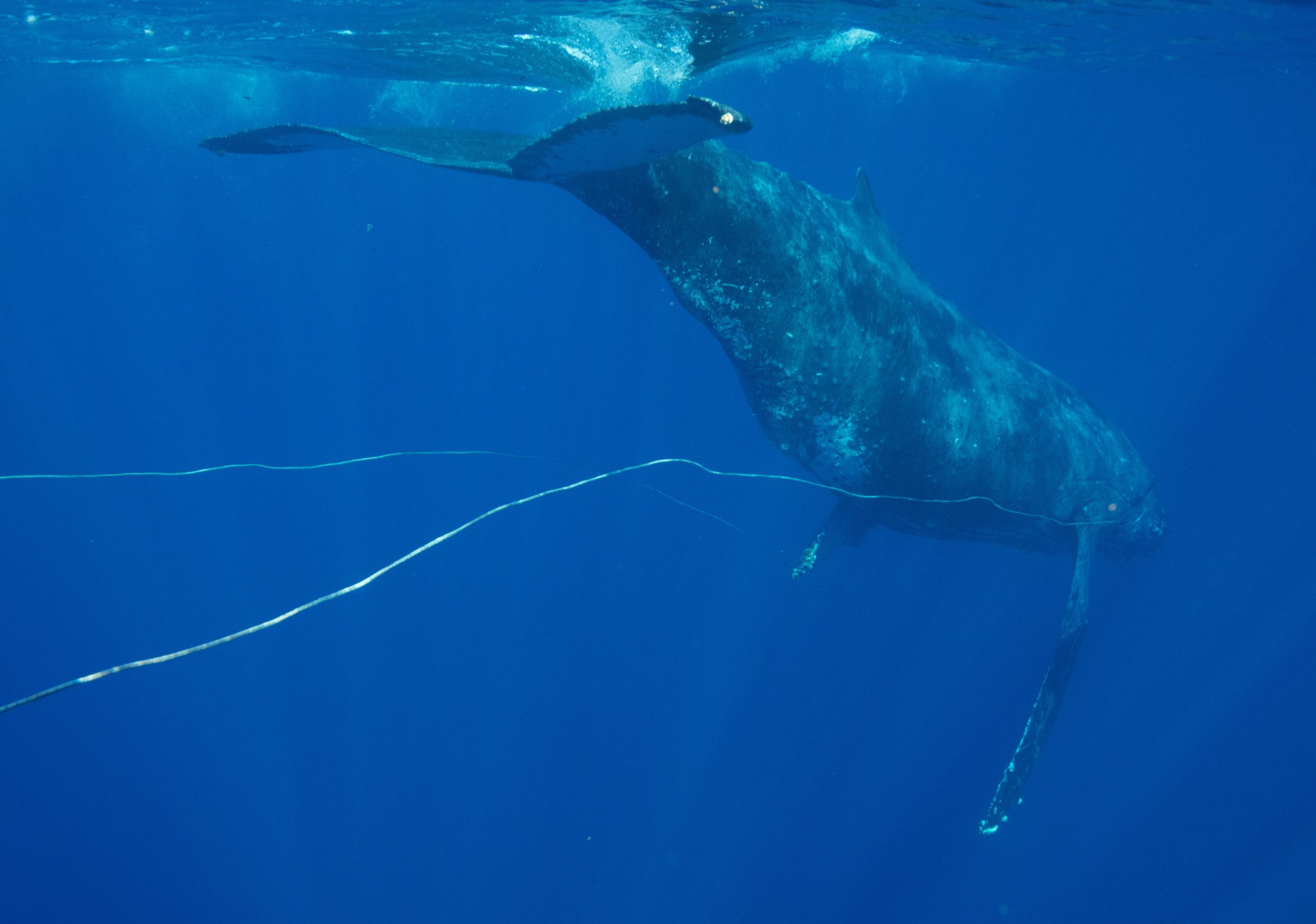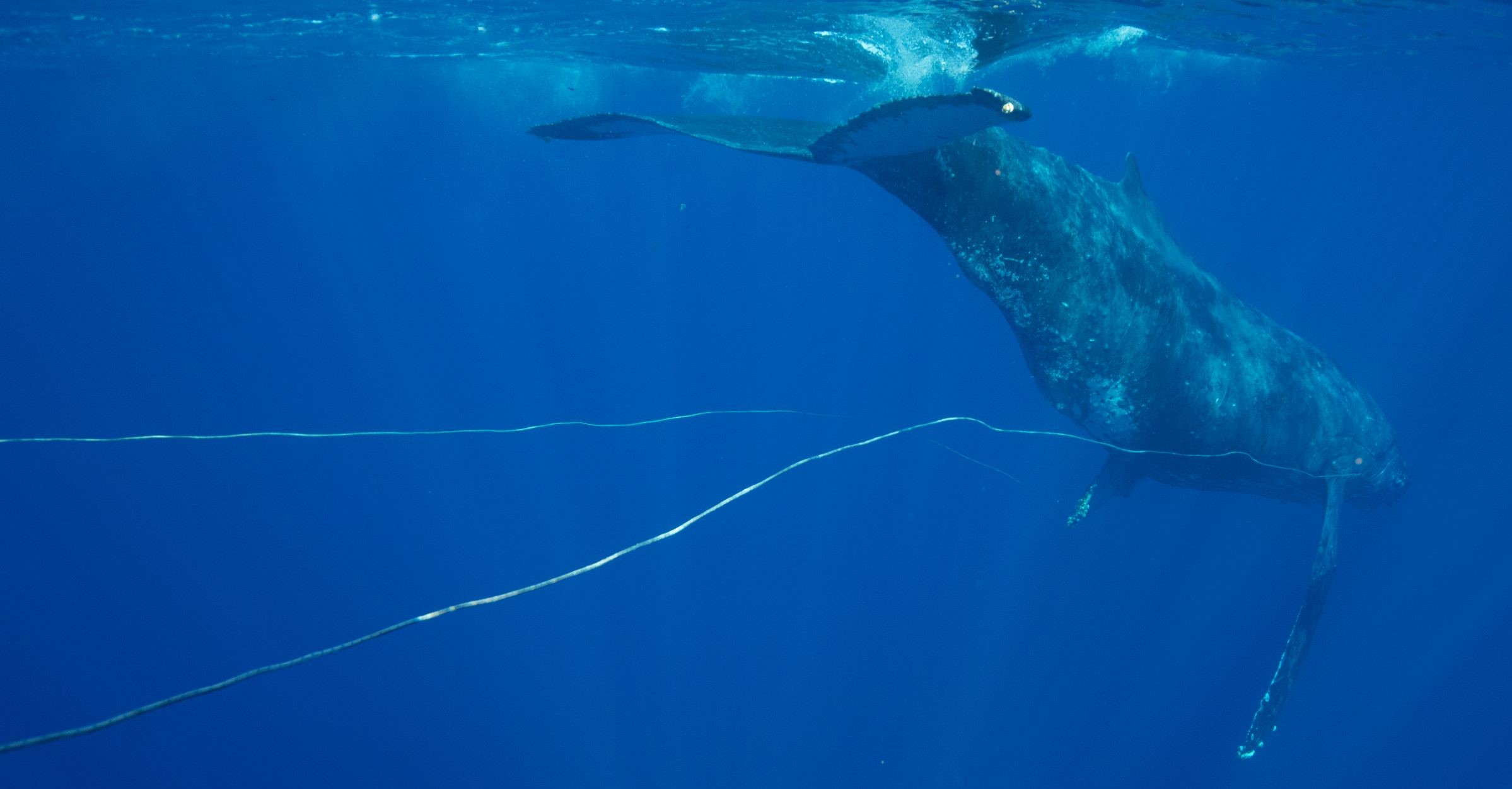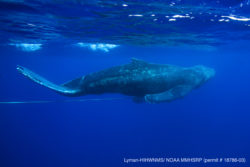
What To Do When You See An Entangled Marine Animal

An entangled whale entangled in Hawaiian Islands Humpback Whale National Marine Sanctuary. Photo: J. Moore/NOAA MMHSRP under Permit #18786-02
Whales, sea turtles, sea lions, and other marine animals are often seen caught in marine debris, usually fishing gear like nets and lines. With nearly 800,000 tons of fishing gear lost annually, and as much as 8 million tons of plastics and other debris entering the ocean each year, animal entanglements are on the rise and pose serious risks to individual animals as well as populations, such as that of the critically endangered North Atlantic right whales.
During the summer months, with increased human activity along coastlines and animal migrations occurring, sightings of entangled marine animals increase. Your first instinct might be to jump into the water to help an animal, but this is actually dangerous and illegal in the United States. Luckily, NOAA’s Marine Mammal Health and Stranding Response Program and the Large Whale Entanglement Response Network under the National Marine Fisheries Service track and document as many incidents of entanglements as possible. Trained first responders are experts at understanding whale behavior, biology and health, vessel operations, handling ropes under tension, and coordinating entanglement response teams.
Entanglements are serious situations as they can injure or kill animals and inhibit the recovery of endangered or threatened whale populations. Whales and other animals that are entangled can suffer from injuries, infection, and wrapping that can impair their ability to feed or swim. The drag from the gear or debris can cause whales to expend more energy to swim, can make it harder for them to feed, and can result in starvation. So how should you help if you see a marine animal in distress?
Keep your eyes on the animal if possible. Take note of what kind of animal you think it is, what seems to be entangling it, your location, and the direction the animal is moving.
Take a video or still photos as evidence. The safest distance to take these recordings is a minimum of 150 feet from the animal.
Keep your distance and don’t try to approach or disentangle the animal. This is for your safety as much as it is theirs.
Contact NOAA’s Marine Mammal Stranding Network, which works with partner organizations and highly trained volunteers all over the country. Responses are coordinated regionally; you can find specific phone numbers for authorized stranding response organizations nearest your location here and you can call the 24 hour stranding hotline at 1-877-SOS-WHAL or 1-877-767-9425. You can also use NOAA’s Dolphin and Whale 911 app available for Apple and Android devices to report stranded marine mammals.
After you have sent in your report, stay near the animal if possible. This will help response teams locate the animal in distress faster and develop a plan to assist it. If you plan to or are able to stay at your location, remember to report what you are wearing or a landmark you’re near such as a lifeguard stand when you report the stranded or distressed animal.
In 2018, the National Marine Fisheries Services issued a National Report on Large Whale Entanglements in the U.S. in 2017 which confirmed 76 cases of large whale entanglements in fishing gear or marine debris. Most of these animals were humpback, gray, minke, endangered blue whales, and critically endangered North Atlantic right whales. And earlier this year, the Fisheries Service released its National Report on Large Whale Entanglements in the U.S. in 2018. Unfortunately, whale entanglements appear to be on the rise.
The National Marine Sanctuary Foundation continues to support whale disentanglement response efforts. Through funding from the California Ocean Protection Council, the Foundation plans to host disentanglement training in the spring of 2021 with the Disentanglement Response Network.
To learn more about marine life in distress, NOAA’s responsibilities, and what you can do, visit the National Marine Fisheries Service website by clicking here.

A young humpback whale entangled in heavy gauge line through its mouth that trailed behind it at Hawaiian Islands Humpback Whale National Marine Sanctuary. Photo credit: Ed Lyman/NOAA, under NOAA MMHSRP permit #18786-03
